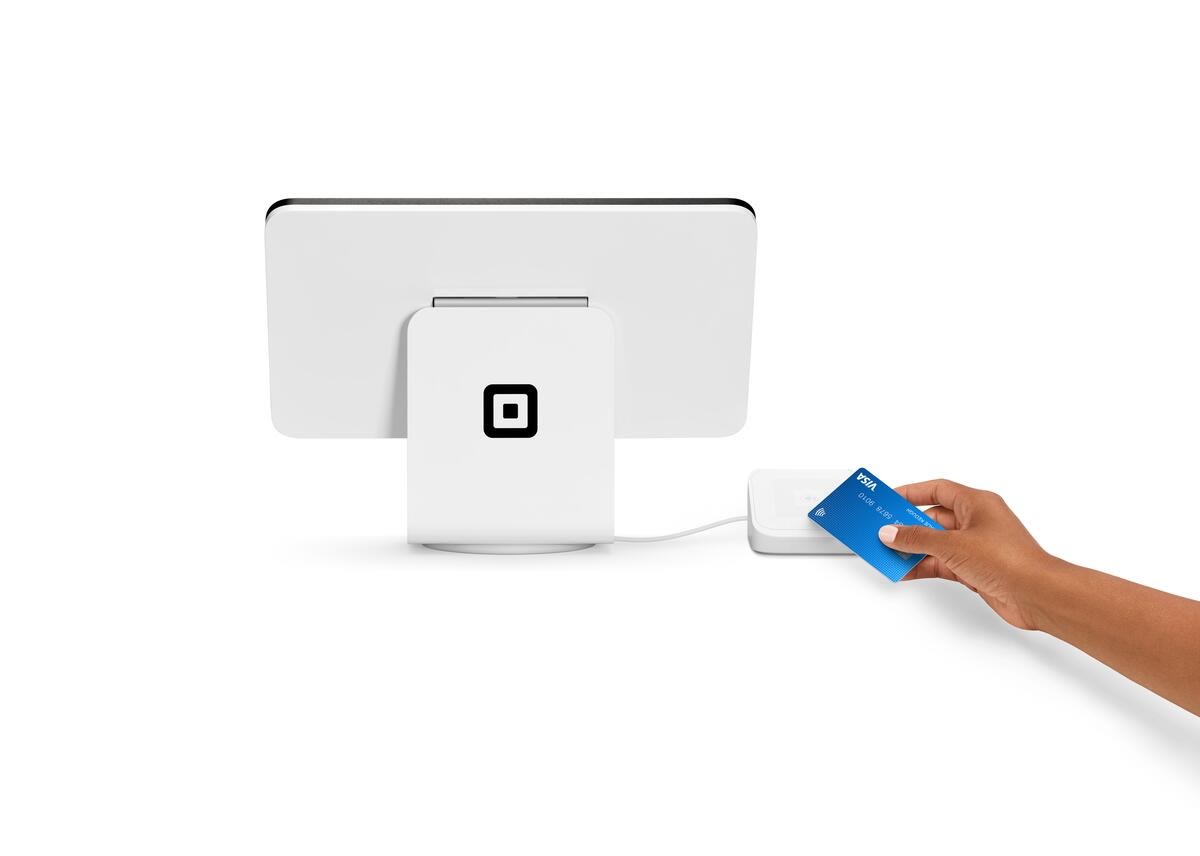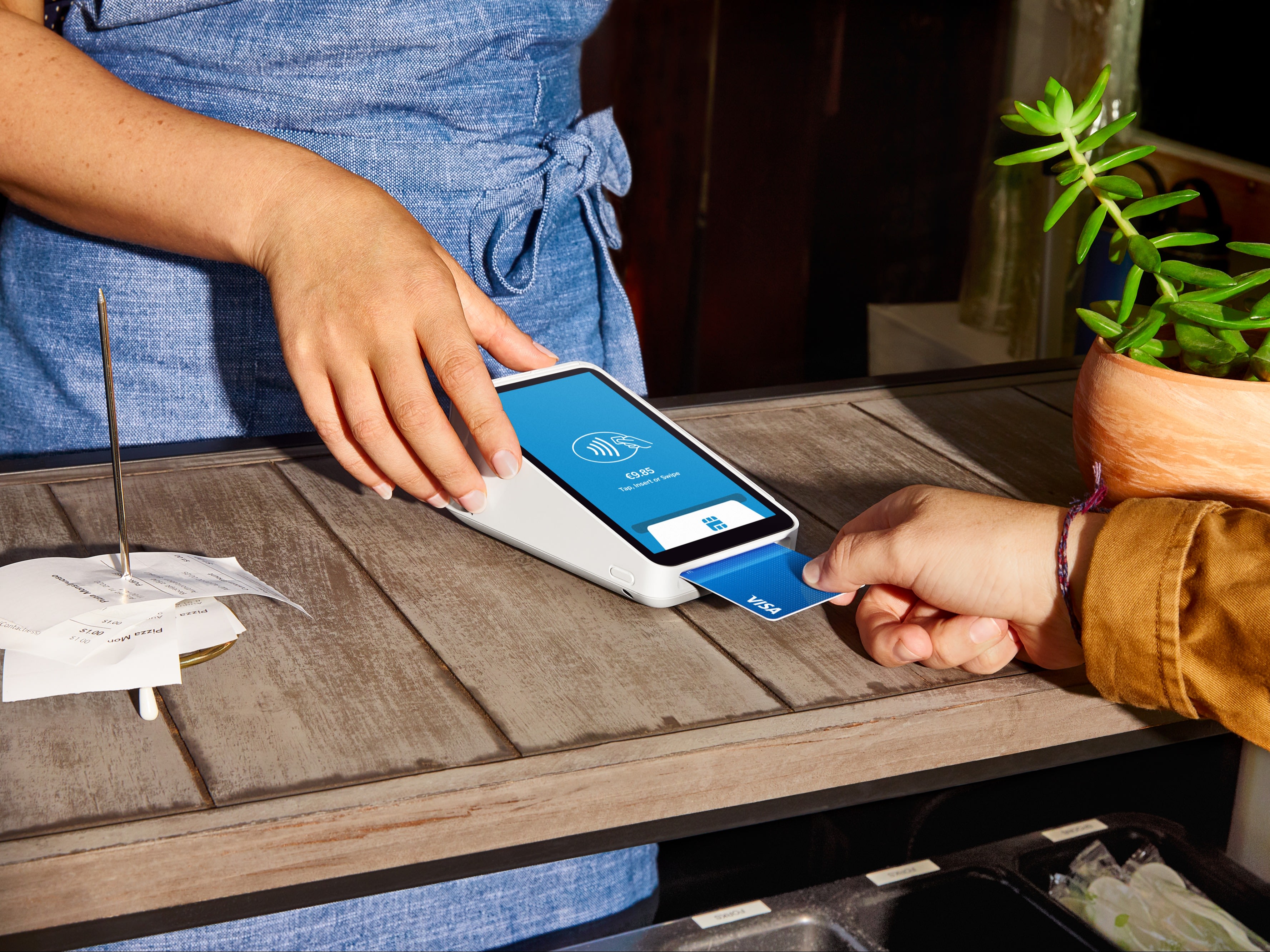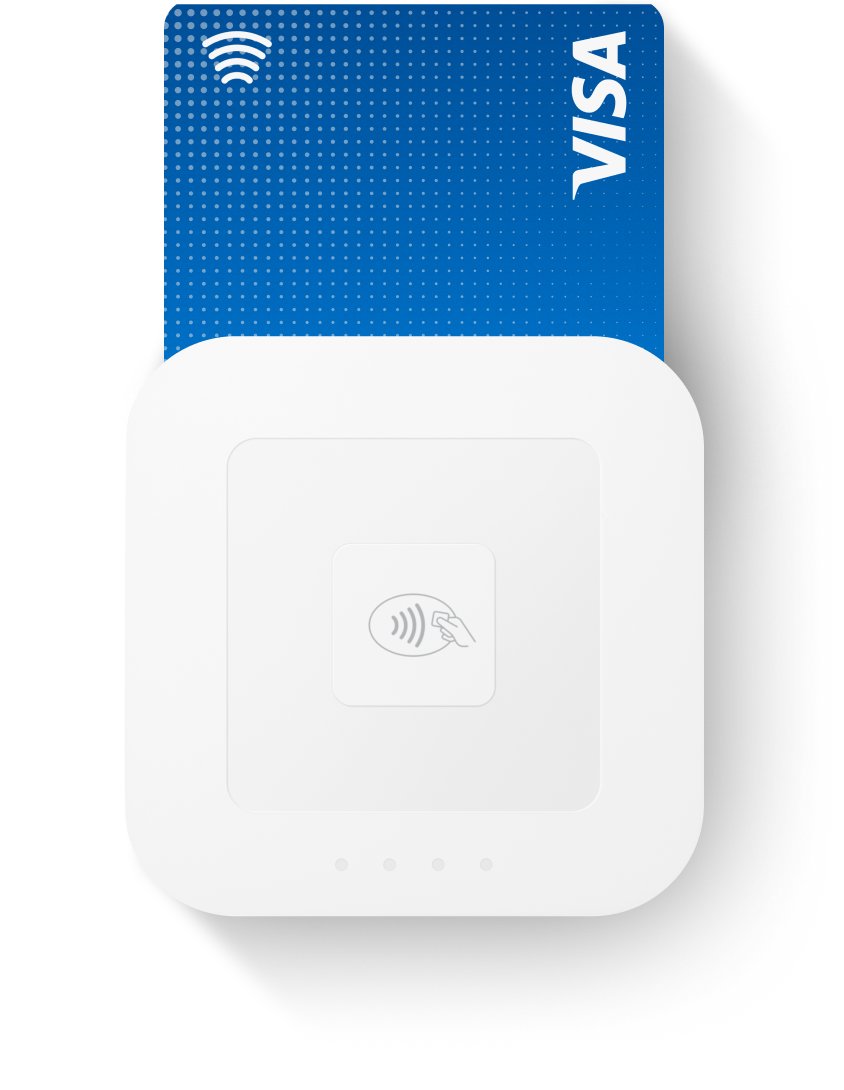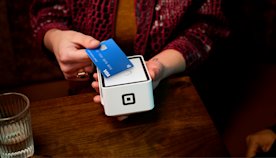Table of contents
Four Frequently Asked Questions About Credit Card Processing
What is credit card processing?
The parties involved in credit card processing
Merchant credit card processing
How does credit card processing work?
Credit card processing fees
Accepting credit cards
Intro
Intro to Credit Card Processing
It helps to know the ins and outs of credit card processing if you’re thinking of starting a business or you own one already. In this guide, we walk you through everything you need to know about credit card processing — and how to select the best option for your business.
Four Frequently Asked Questions About Credit Card Processing
1. What is a credit card processing company?
A credit card processing company (like Square) handles credit and debit card transactions for businesses.
2. How does credit card processing work?
Credit card processing works through several parties. These include issuing banks, acquiring banks and the merchant services provider.
3. How much are credit card processing fees?
Square’s credit card processing fees are fair and transparent:
- 1.75% + VAT for each tapped (contactless) or inserted (Chip + PIN) card-present transaction
- 2% + VAT for payments manually keyed into to the Point of Sale App
- 2.5% + VAT for Square Invoices and card-not-present transactions via Virtual Terminal
- 1.4% + 25c + VAT for European cards and 2.9% + 25c + VAT for non-European cards for our online payment products, including Square eCommerce API, Online Store, Checkout Links, and purchases of Digital Gift Cards
4. How can I accept credit card payments?
To accept credit card payments, you need a credit card reader. The Square Reader is just €19 + VAT, and accepts chip and PIN, contactless, and mobile payments.
Contact sales
Contact our sales team to learn more about how Square could help your business.
What is credit card processing?
Taking a credit card payment may seem simple enough: a customer hands their card, you process it, and with Square, the money lands in your account the next business day. But, there’s a lot more going on behind the scenes. u. From the moment you take a contactless or chip and PIN payment to the moment the money is deposited, there are a number of different parties involved — each of them handling a crucial step in the chain of events. Knowing how this all works helps you understand where you might incur fees, and informs your decision when you choose a credit card processing system for your business.

The parties involved in credit card processing
Imagine you’ve popped into your local café and bought a coffee on your card. Here are the official names of the players involved in the transaction:
- The cardholder: this is the person with the credit card (like you)
- The credit card: that rectangular piece of plastic with your payment credentials on it (e.g. Mastercard or Visa)
- The merchant: the business accepting a credit card as payment for goods or services (the café)
- The point-of-sale system: the interface used by the merchant to accept the credit card payment (e.g. a Square Reader or Stand)
Now let’s zoom in for a second. There are a few additional parties represented that actually make the transaction happen. They are:
- The issuing bank
- The acquiring bank
- The merchant services provider
What is an issuing bank?
The issuing bank is the financial institution that provides you with your credit card and accompanying line of credit. It’s basically your credit card company. Issuing banks act as middlemen between you and the credit card networks by issuing contracts with cardholders for the terms of the repayment of transactions. For example, your issuing bank could be Bank of Ireland or AIB.
What is an acquiring bank?
The acquiring bank (also known as a merchant bank or acquirer) sends the transactions to the network, which then passes them on to the issuing bank.
What is a merchant services provider?
A merchant services provider is an entity that allows businesses to accept payments by credit card, debit card, and also NFC mobile wallets (like Apple Pay and Google Pay) ). A merchant services account is established with an organisation that has relationships with the issuing and acquiring banks. Your merchant services provider allows the processing of electronic payments when your customers want to pay for things.
What is a payments gateway?
If your local café has an online store selling coffee beans and mugs, a payment gateway would process those online credit card transactions. A payment gateway facilitates the transfer of information between a payment portal (like an e-commerce website) and the acquiring bank. It encrypts sensitive information like card numbers to ensure security throughout the process.
Payments are just the start
Square helps take care of the day-to-day stuff, too. Ee have all kinds of services to help you save time and run more smoothly.
Merchant credit card processing
How do you get a merchant services account?
Conventionally, if you wanted to start processing credit cards, you’d apply for a merchant services account at a bank, which can be a cumbersome process. After you were approved, you would then associate your point-of-sale system with your merchant account and could start accepting credit cards.
But with Square, things work differently. Square itself has a merchant services account with acquiring banks. We essentially act as one giant merchant services account for all businesses that use Square.
What is a high-risk merchant services account?
In the credit card processing world, some types of businesses may be considered ‘high risk’. High-risk merchant services accounts can have steeper fees and stricter terms. Institutions may also deny high-risk merchants an account.
There’s no hard rule, but certain types of businesses tend to be flagged as high-risk merchants more than others. These can include businesses that sell goods or services like membership clubs, and those that engage in questionable marketing tactics. Read Square’s user agreement and terms of service for more information.
How does credit card processing work?
Now that we’ve gone through all the parties involved in credit card processing, we’ll walk through how everything actually works. Let’s go back to your local café. You hand the barista your card, and they process it. What happens next?
Here’s how a credit card is processed with Square:
Authorization
The request is submitted to Square when a merchant takes a contactless or chip and PIN payment from a customer. We send the transaction to the acquiring bank, which then sends it to the issuing bank for authorisation. The issuing bank checks for sufficient funds and runs the transaction through fraud models to determine if it is safe (to protect the cardholder and the issuing bank).
Batching
This is the settlement stage, i.e. how the money from a transaction is sent to the acquirer to begin the process of depositing it into the merchant’s account. It’s called batching because payments are sent in a large group.
Funding (aka settlement)
The funding (or settlement) step is when businesses get the money from a credit card sale deposited into their accounts. Square’s deposit schedule usually deposits the money into your bank account as soon as the next business day.
Credit card processing fees
Many companies have a ton of hidden credit card processing fees. These can include transactional fees (like interchange reimbursement fees and assessments), flat fees (like PCI fees, annual fees, early termination fees and monthly minimum fees), and incidental fees (like chargebacks or verification services). Square, on the other hand, has none of these.
Accepting credit cards
What is a credit card machine?
A credit card machine, also called a point-of-sale (POS), is a device that interfaces with payment cards to make electronic fund transfers. Newer point-of-sale systems like Square’s also accept mobile NFC payments like Apple Pay, Android Pay, and Samsung Pay.
Credit card machine prices
Some credit card machines can cost hundreds of pounds. Square Reader, on the other hand, costs just €19 + VAT, and our POS software comes free.

Mobile credit card machines
Many point-of-sale systems are big and clunky, but Square’s products are light, sleek, and completely mobile. They’re designed to look great on the counter of your brick-and-mortar shop, can fit in your pocket if you’re selling on the go, and, most importantly, make each transaction easy for your customers
How to set up credit card processing for your small business
If you’re new to all this, or you’re just starting your first business, don’t fret about getting set up to process credit card payments. Nowadays, with companies like Square, it’s very easy to start accepting customer credit cards at your small business. In fact, all you need is your iPad or smartphone. Square works directly with the device you already have to accept credit card payments and NFC payments like Apple Pay.
Start accepting credit card payments, step-by-step:
- Order the Square contactless and chip reader and tell us where to mail it.
- Create your free Square account.
- Download the free Square app and link your bank account for fast deposits.
- Connect the reader and start taking payments.
How to process credit cards
Credit cards are processed differently based on the type of card. If you’re selling from a store, you’ll most likely be taking chip and PIN (with the card inserted vertically into the Square Reader throughout the transaction) and contactless payments (where the customer’s card is tapped to the Reader, completing the transaction in seconds).

What other types of payments should you accept?
The more payment choices you give your customers, the more reasons they have to make a purchase. If you operate from a physical location, you should aim to offer your customers the option of chip and PIN, contactless and mobile payments. If you work remotely, you can get set up with software like Square Virtual Terminal to take ‘card not present’ payments. In this instance, you manually type the customer’s’s card details in — meaning you can take payments wherever you are.
Whatever you end up using most, it really pays to accept as many different types of payment cards as possible—your customers and bottom line will thank you for it!

